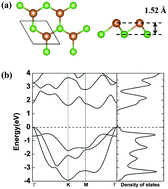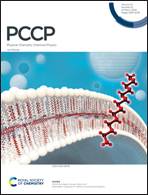The electron–phonon scattering and carrier mobility in monolayer AsSb
Abstract
Through first-principles calculations, the electron–phonon scattering of two-dimensional monolayer AsSb is investigated. The Boltzmann transport equation is used to compute the phonon limited carrier mobility. We find that the optical phonon scattering rates are much larger than acoustic ones around the valence band maximum (VBM) and the conduction band minimum (CBM). The phonon-decomposed scattering results show that transverse optical (TO) phonon modes dominate the scattering around VBM, while longitudinal and out-of-plane acoustic modes contribute mostly to the scattering at higher energy. TO phonon modes dominate the scattering for electrons over all energy level, and the electron–phonon matrix element analysis verified the results. Finally, we observed that the largest mean free paths for hot holes and hot electrons are 20 nm and 8 nm, respectively. That is the best range to extract the hot holes and hot electrons. More interestingly, owing to the in-pane net dipole moment of AsSb, the intrinsic electron/hole mobility of AsSb are 38/50 cm2 V−1 s−1, which are less than monolayer arsenene and antimonene.



 Please wait while we load your content...
Please wait while we load your content...